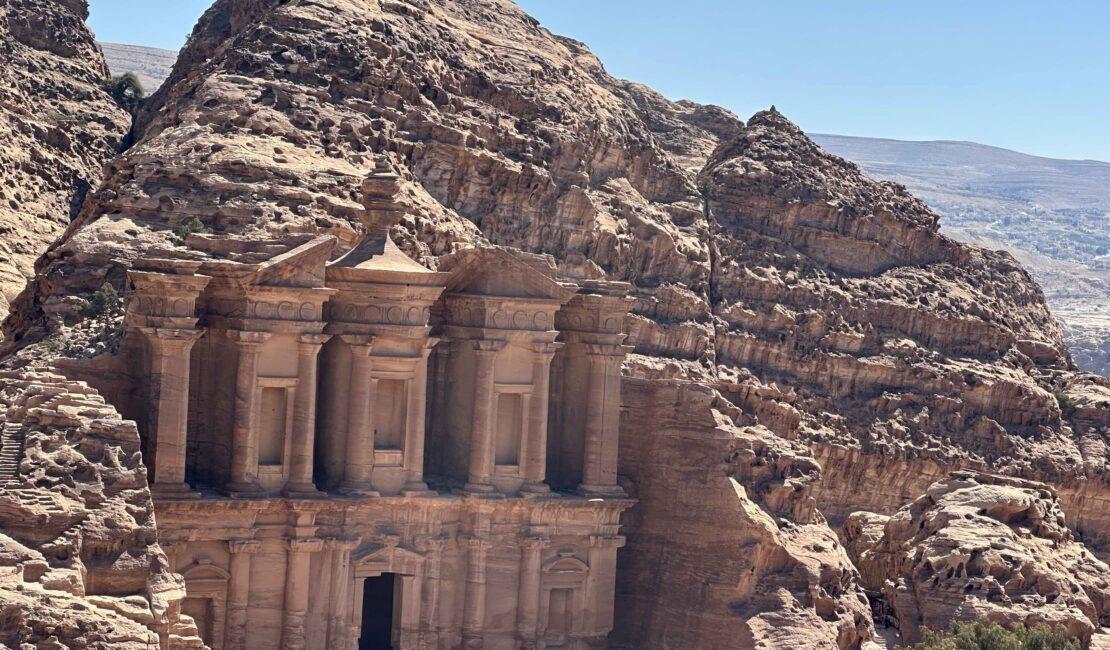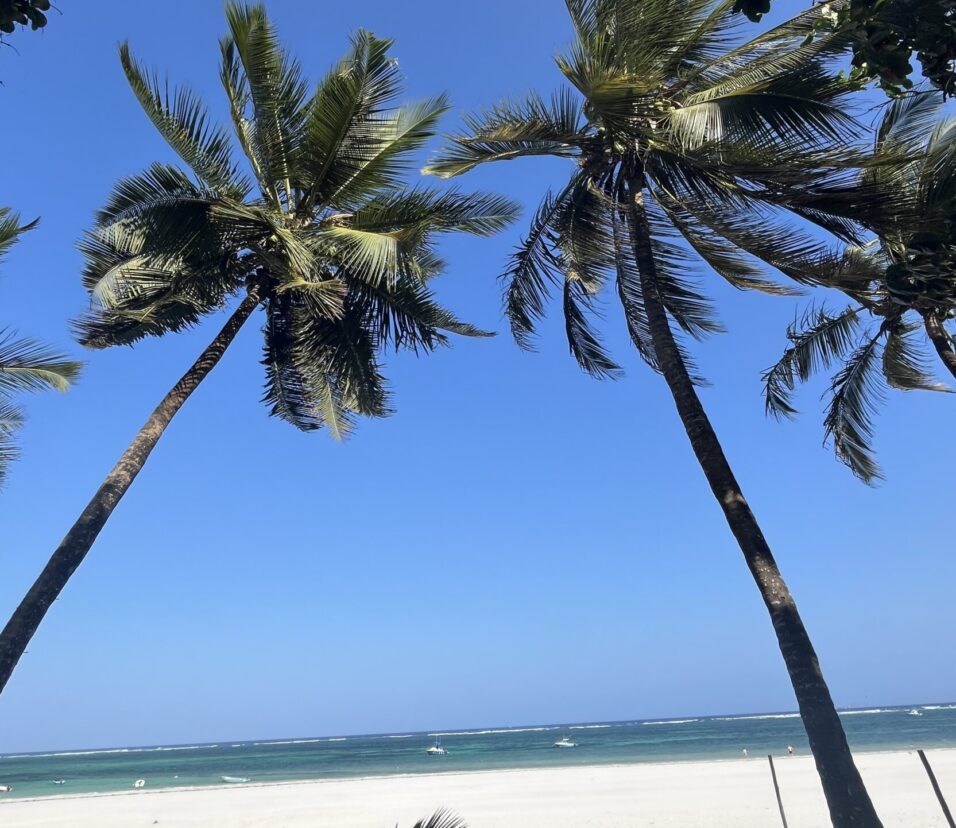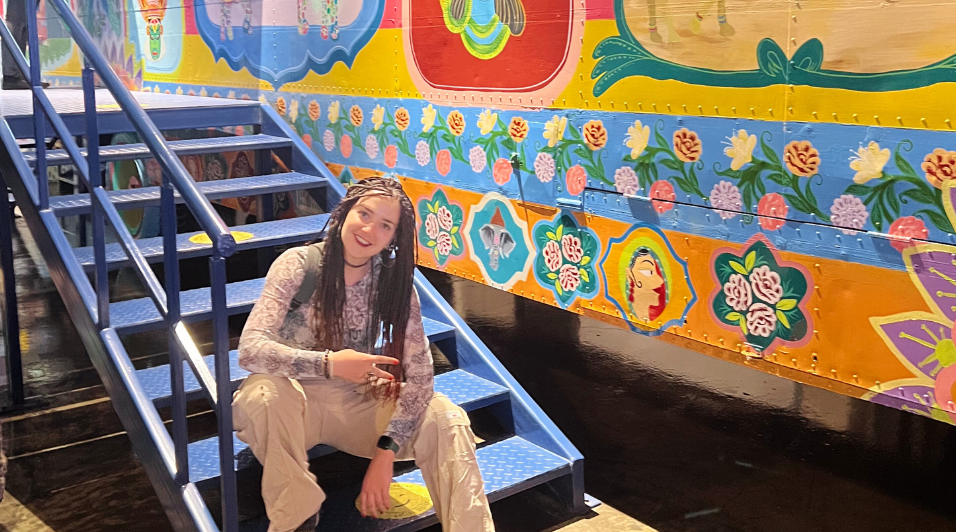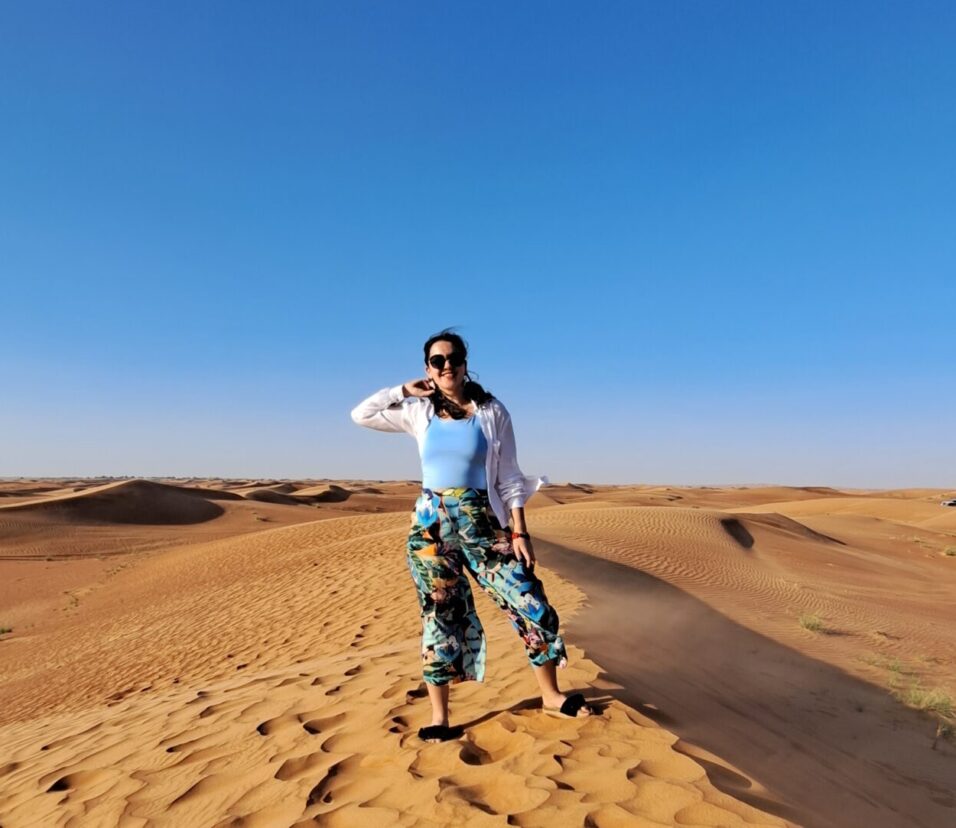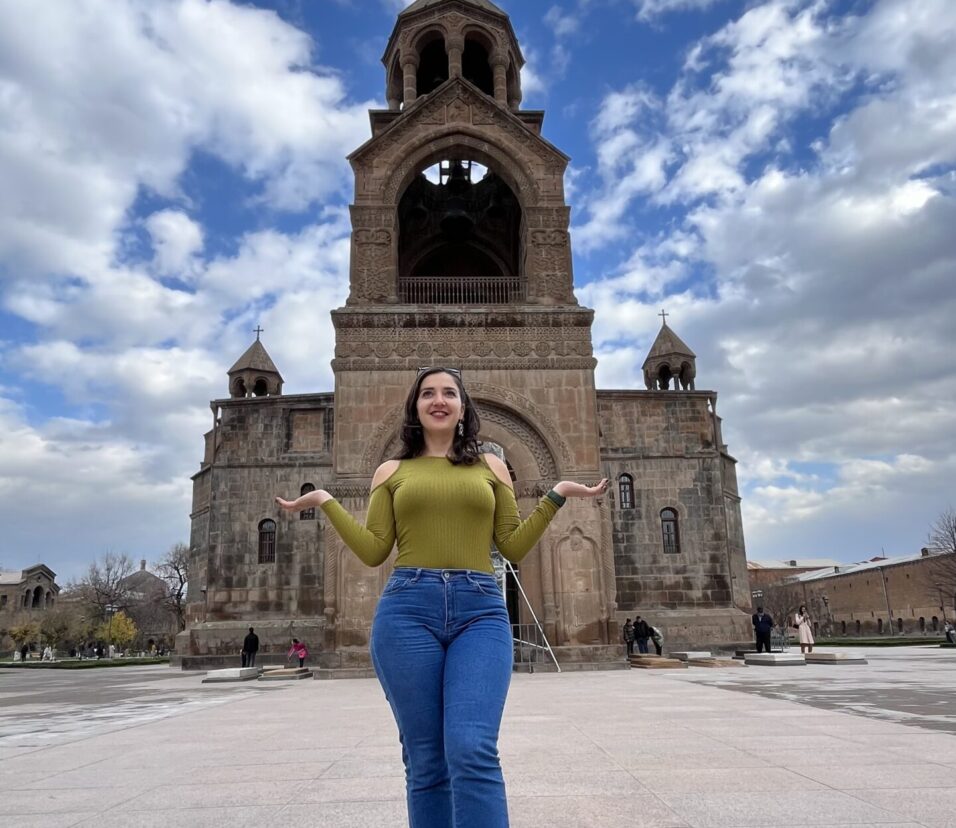Petra, the ancient city, lost for more than 10 centuries, was declared a UNESCO World Heritage Site only in 1985 and was listed among the new 7 wonders of the world. The ancient Nabatean civilization dates back to around the fourth century BC. Although their alphabet is considered a precursor to Arabic writing, Petra’s history has been preserved more by its neighbors and enemies than by itself. The original name of the city was “Raqmu”, while “Petra” is the name in ancient Greek that means ‘rock’.
In addition to its strategic geographical position for trade, what distinguished this city was the rare skill in building water storage systems, hidden in the majestic rocks of the desert. They created a system so advanced and complicated for the time that it turned the city of Petra into an oasis for traders coming from Yemen, Egypt, and India. This system could supply with water gardens and trees even during years of severe drought. The management of water, the most precious resource in the desert, gave them power and enemies. Fortunately, the narrow canyon that surrounded it from the east and the wealth of the city helped them maintain their independence until the arrival of the Roman Empire.
King Aretas IV Philopatris, managed to maintain autonomy through an agreement with the Romans. During his reign were built the city’s greatest monuments, such as the Treasury and the famous rock-cut tombs. Later, Roman influence shifted the center of trade to Syria, and Petra began to be abandoned. Two earthquakes and the lack of maintenance for the water infrastructure led to the destruction of the water collection system and the city disappeared from the map after the 6th century AD.
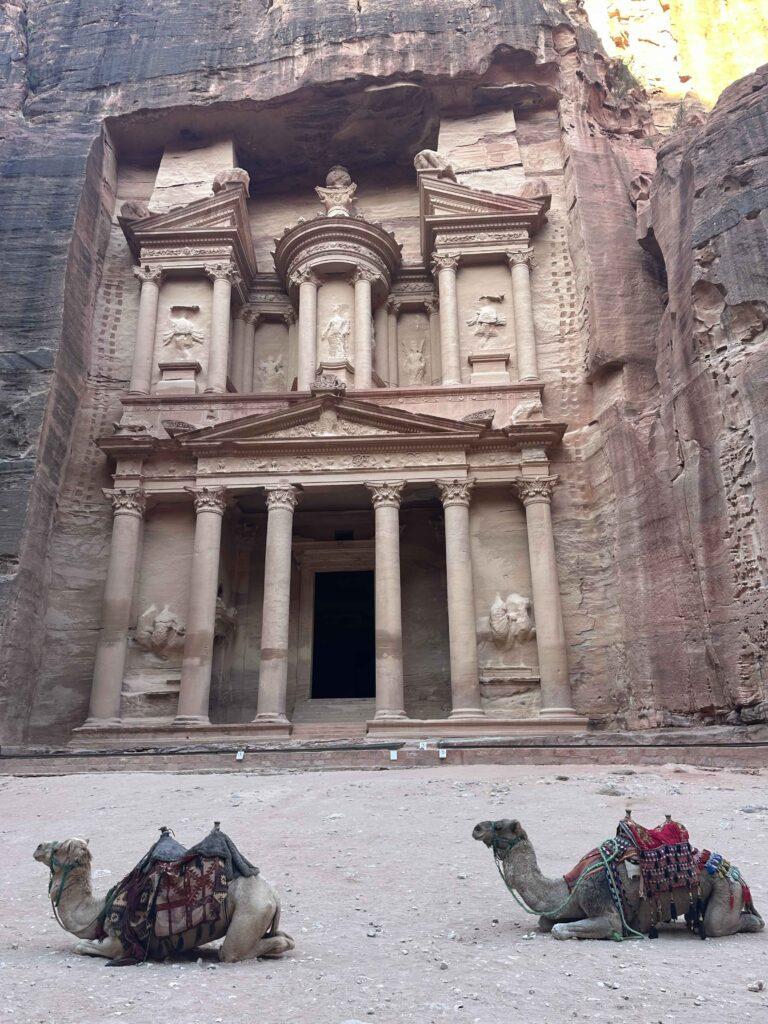
The secret of Petra’s existence was kept for more than 12 centuries by the local Bedouins, only to be discovered in the 19th century. Today, only 15% of it has been excavated; the rest is still covered by sand. Visiting this city was so impressive that I decided to stay an extra day to explore the ancient city, hidden among the canyons and steep cliffs that stretch for kilometers. If you are looking for a more detailed description of the trails in Petra, you can read the article “The Best 9 Petra Hiking Trails from the Main Trail to the Monastery”. In this article I’ll share my personal experience during two days of exploration.
It was early April when we visited Jordan, including Petra. The most practical way was to stay in Wadi Mousa, the town located right next to the entrance of the archaeological site. I recommend the ‘Jordan Pass’, which offers 1, 2 or 3-day entry to Petra, but also other attractions. I would say that two days were more than enough. The hot climate, the challenging terrain and the size of the ancient city made it impossible to absorb everything in a single day. On the other hand, the accumulated fatigue of two days would not provide a pleasant experience for a third day.
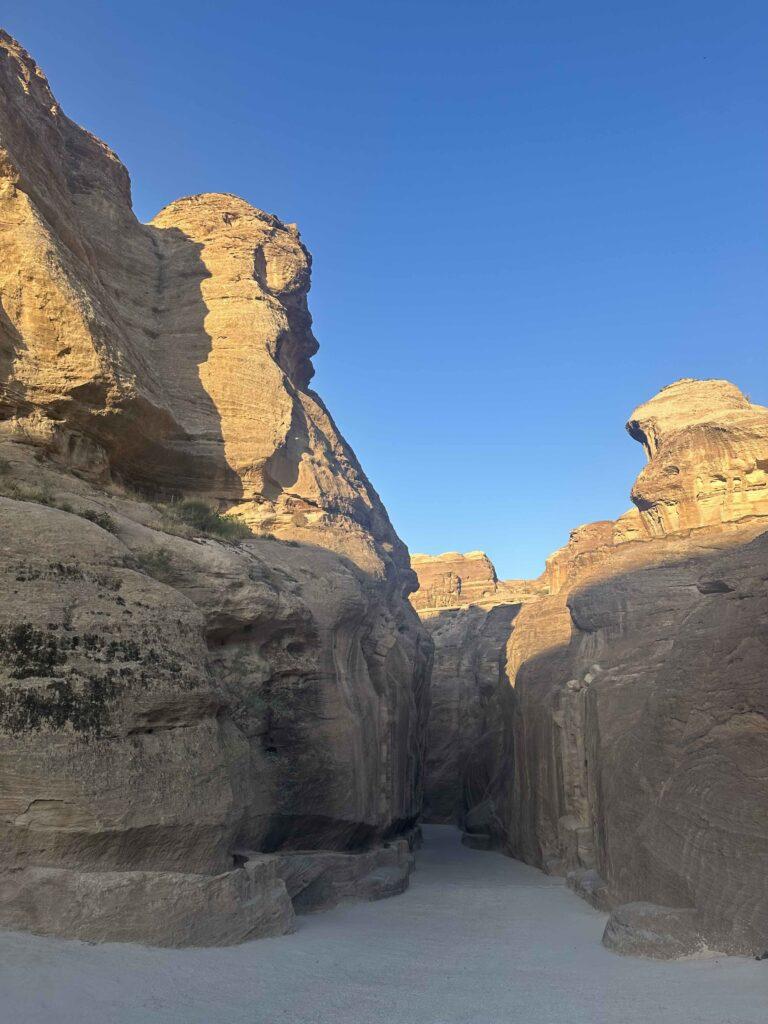
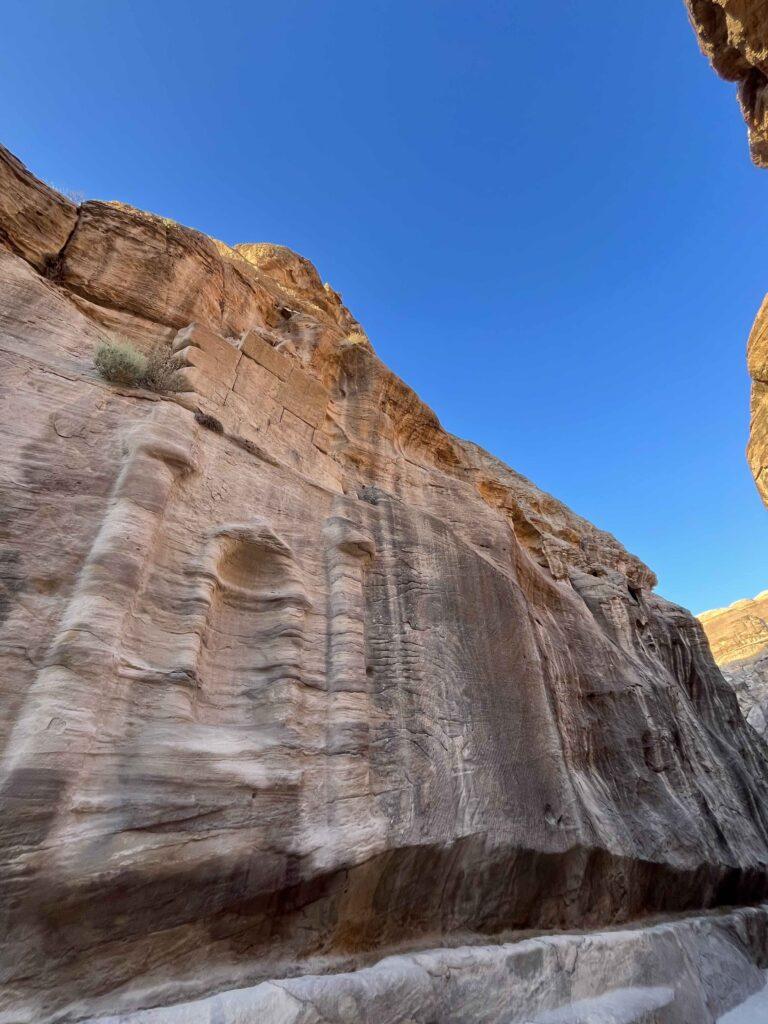
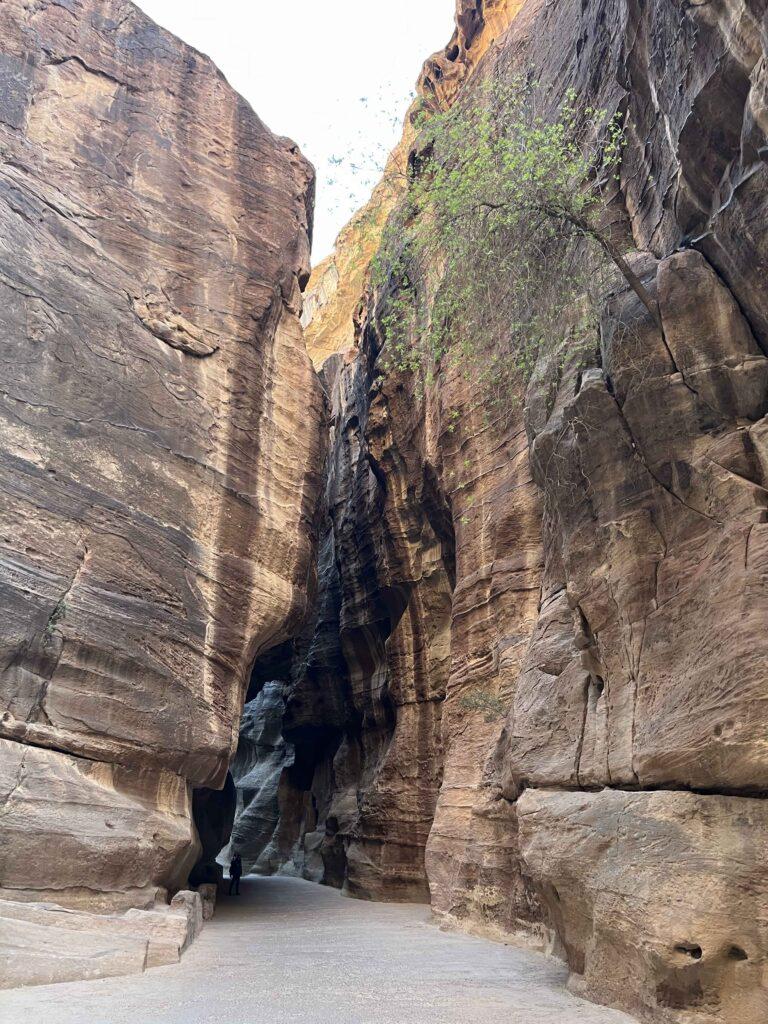
Day one started at 06:30 in the morning. As expected, the number of tourists was very small at that hour and you could enjoy the entire canyon in peace. The main trail, about 4.5 km, starts from the visitor center in Wadi Mousa and passes between the canyons that lead to the famous Treasury. Al-Khazneh, this marvel of stone carving, is thought to be a mausoleum built during the time of the Nabataean king Aretas IV. The Bedouins believed that a treasure was hidden in the upper dome of the facade, so it was attacked for years, only to turn out nothing more than a fragment of carved rock.

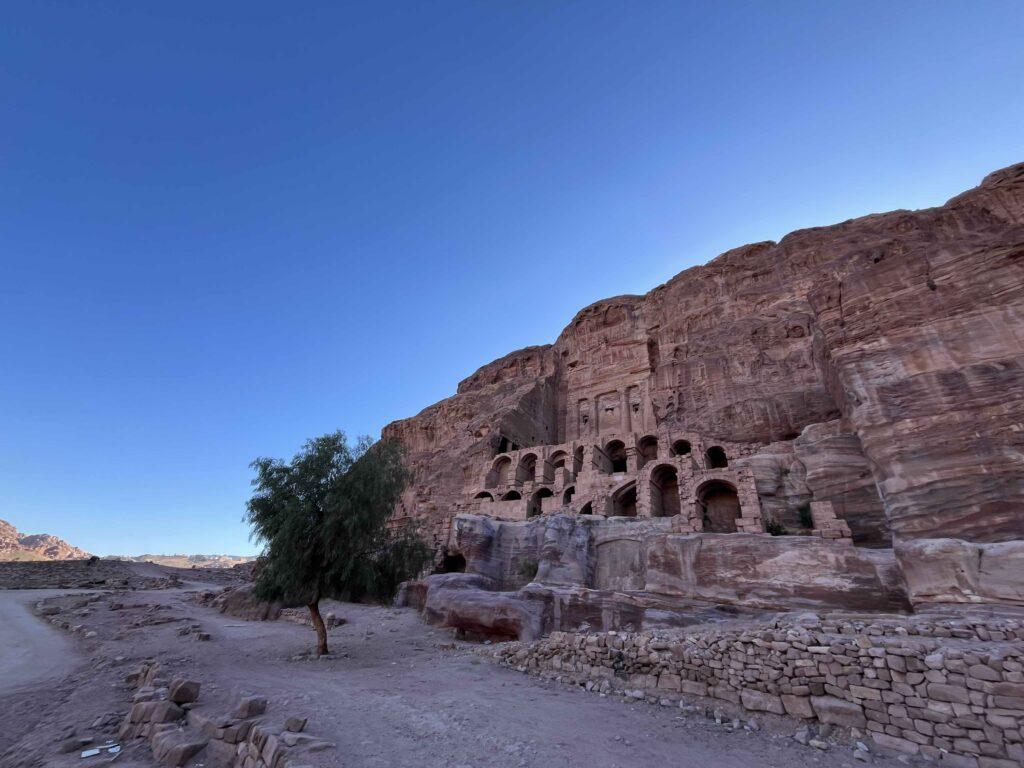
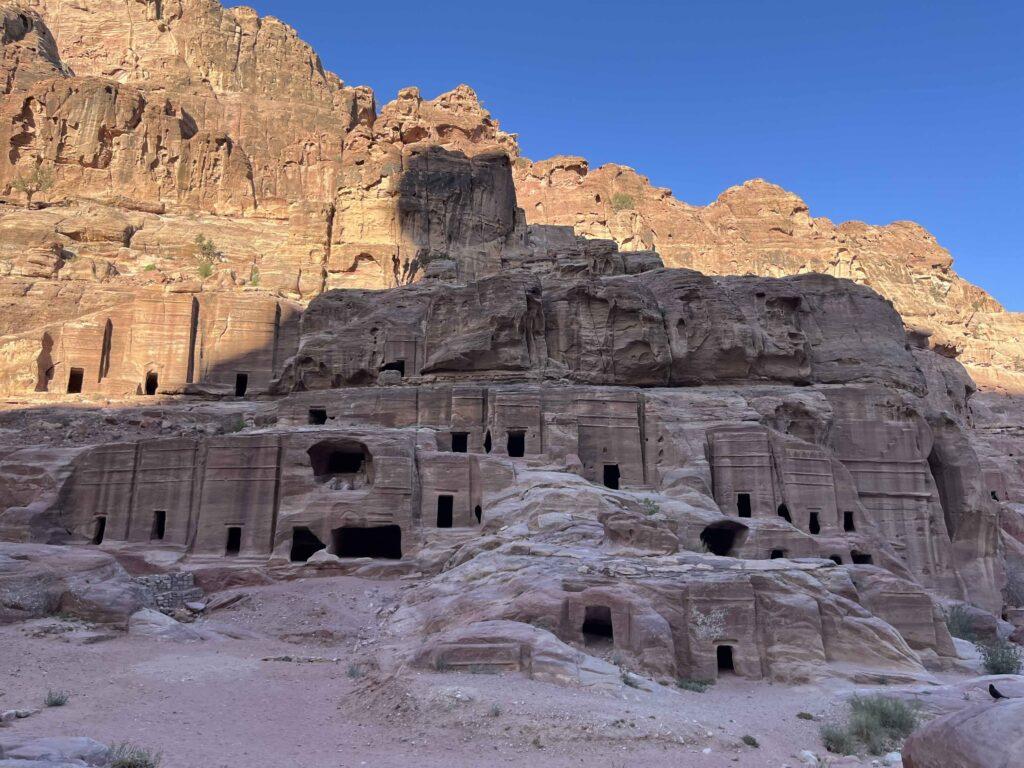
After passing the Treasury, the path becomes wider with local tents offering souvenirs, water and food. About 500 meters further on is the Nabatean Theater. The original capacity of this (non-Roman) amphitheater was 3,000 seats spread over 45 rows. (Lonely Planet, 2025). A little further down, a detour to the right leads to the Royal Tombs, which are somewhat massive. I must say that the most preserved structures in Petra are the carved tombs.
Following the main path, you reach the Byzantine Church on the right. This church, although ruined, still has the original mosaics on the floor, which represent a diversity of cultures. On the other side of the path is the Great Temple, with an area of 7,560 square meters.
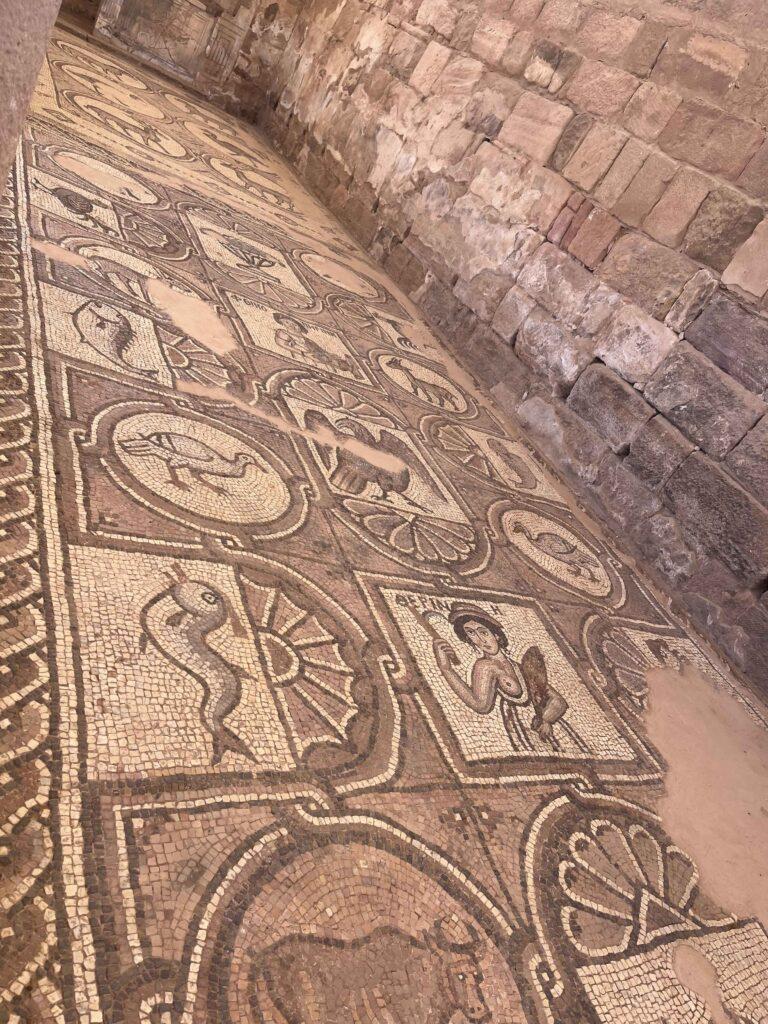
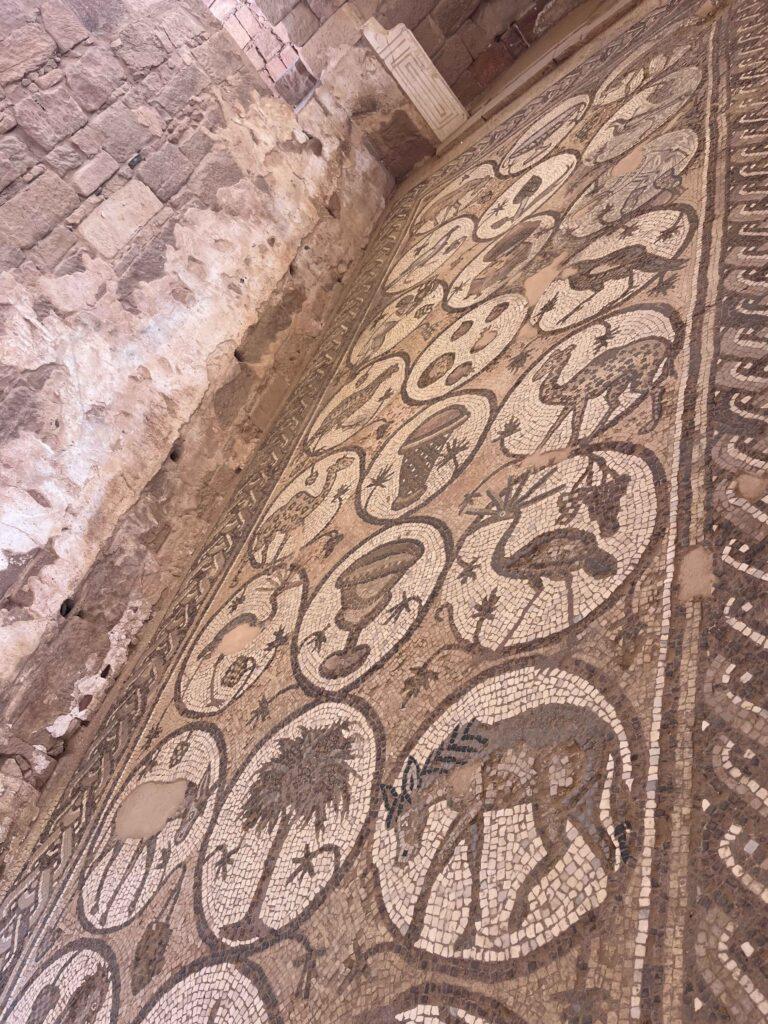
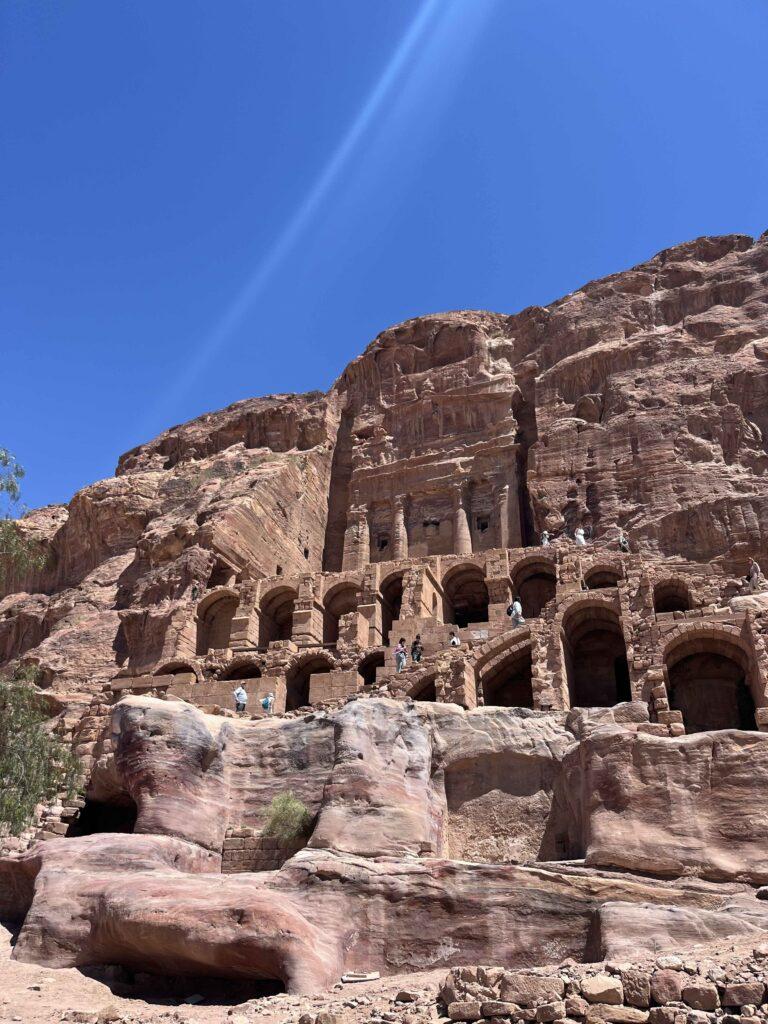
The next path north leads to the “High Place of Sacrifice”. We decided to follow this path on the second day. Further down is a bridge and a rest area with trees and restaurants. Then the road leads to the Monastery, or Ad Dayr. If up to that point you can pick a driver with a card to save energy, from now on you’ll climb 800 steps to the top. Although the path stretches among rocks and local vendors, the climb has places to rest and was not tiring. We didn’t consider to ride a mule and I can’t tell how much it costs. All I can say is that at least eight people offered me this service that day, magnifying the time needed to make the climb and hoping you’d buy their service.
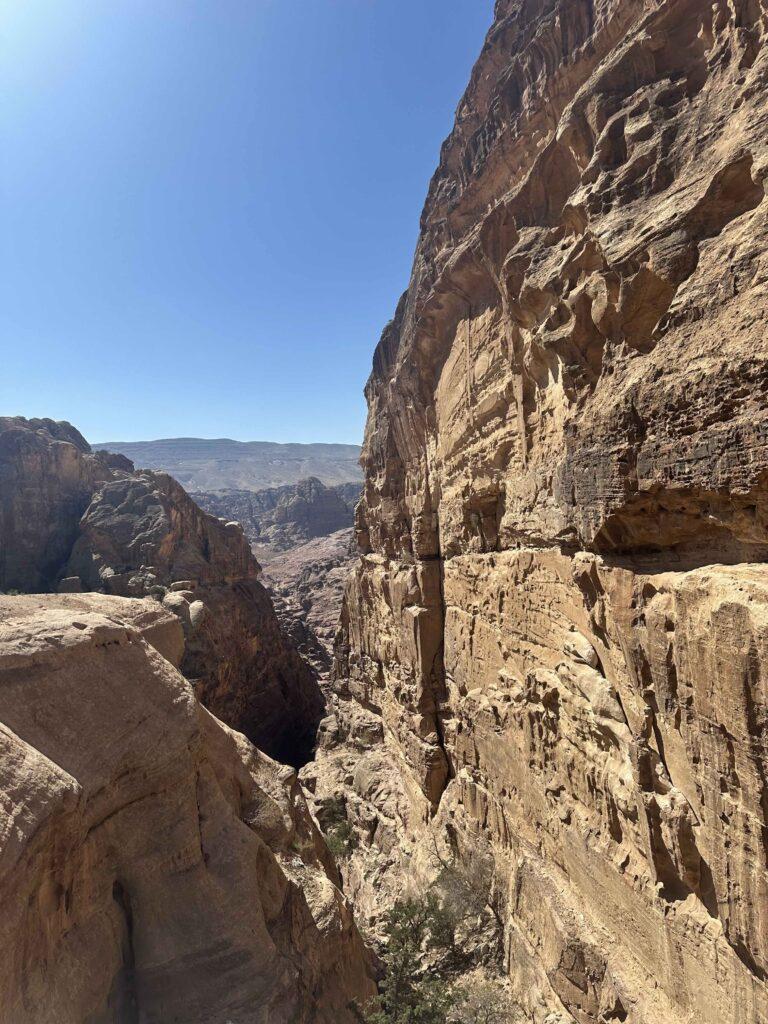
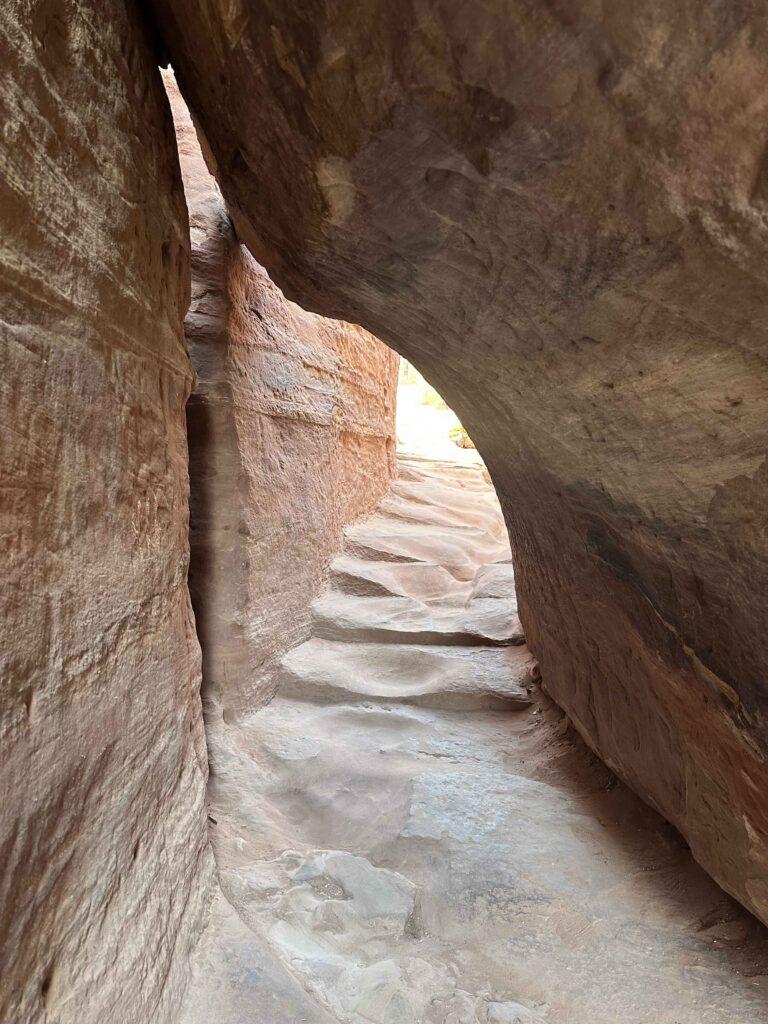
When the steps were finally over, the majestic Monastery appeared on the right. Although it’s known by this name, the function of the structure is still uncertain. Its facade, like the entire city, contains a mix of Mesopotamian, Phoenician, Ancient Greek, South Arabian and later Roman elements. I recommend exploring the surrounding area. In a seven minutes hike you see impressive panorama that offer sweeping views over the canyons and desert.
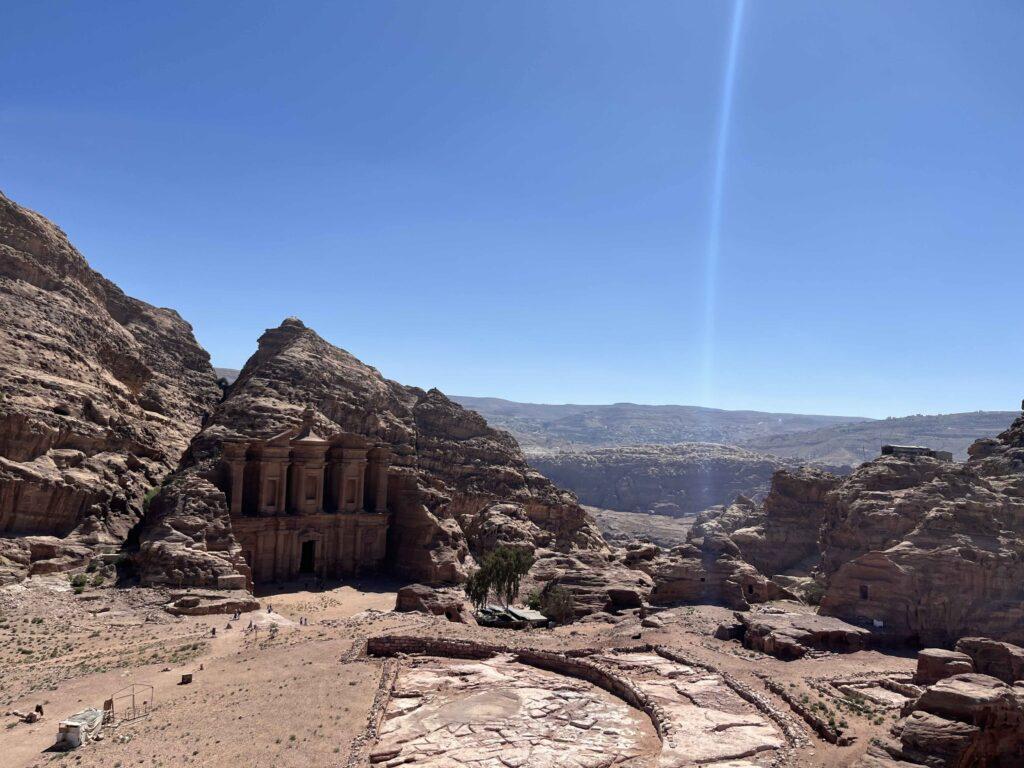
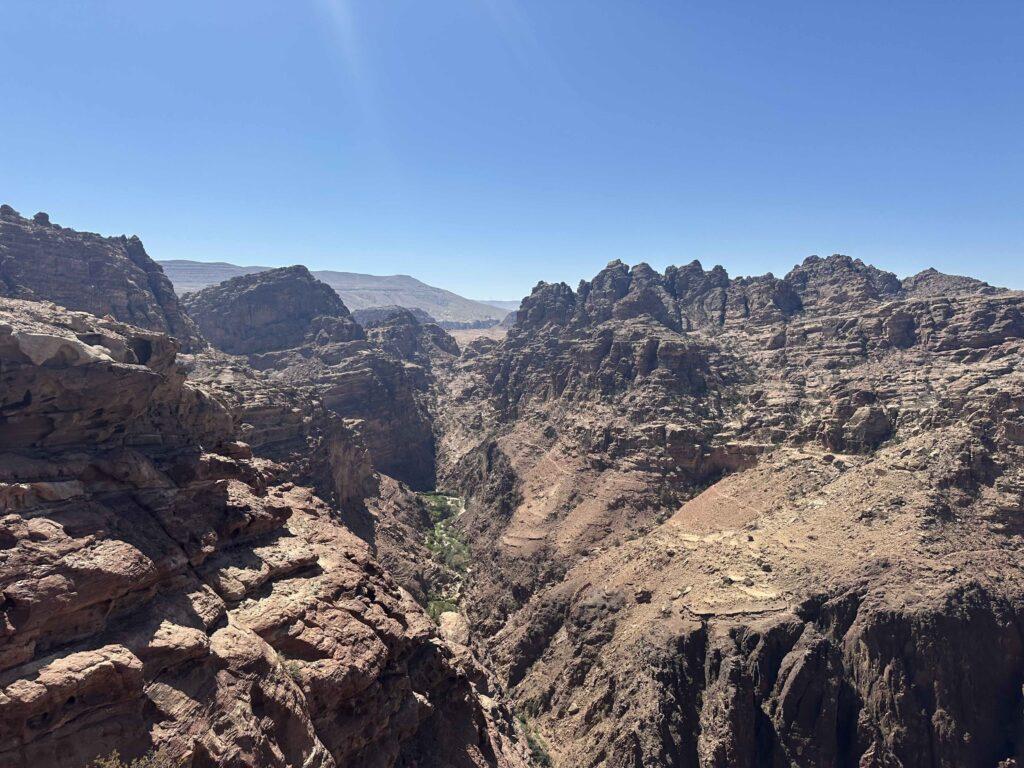
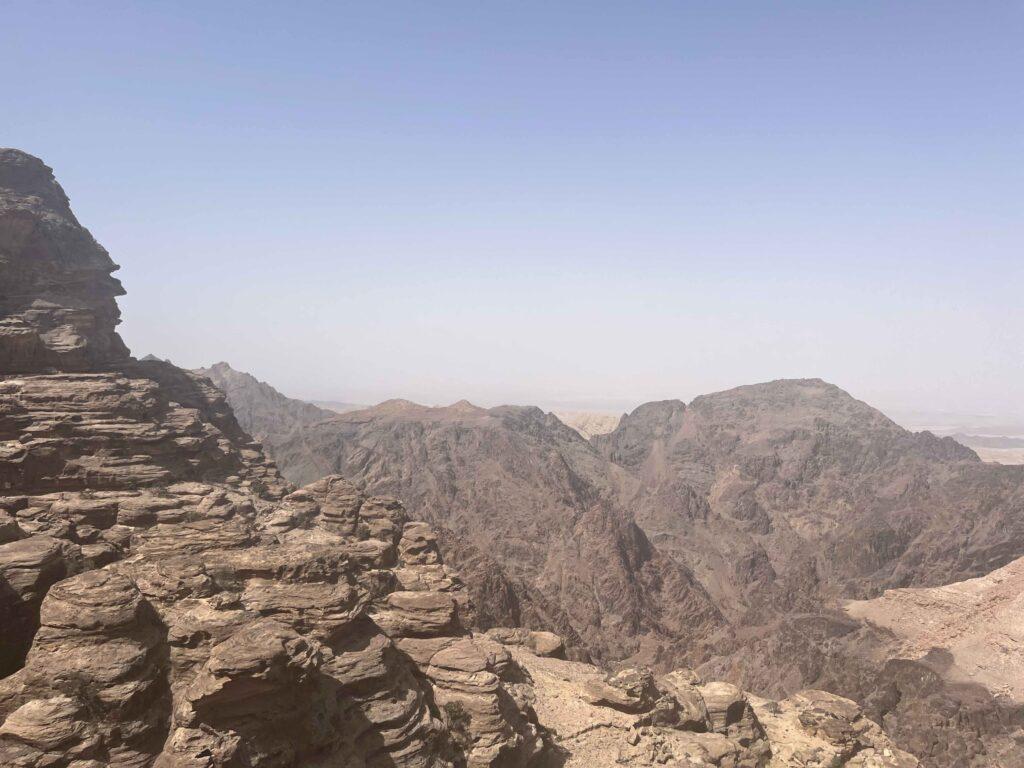
We took the same route back, which involved descending the 800 steps. This time we stopped at “Qasr al-Bint” the best-preserved freestanding structure in Petra is the main temple of the ancient city. The name from the legend is Qasr al-Bint Far’un, the Castle of the Pharaoh’s Daughter. Legend has it that Aretas IV challenged his daughter’s suitors to build a monument of such proportions.
The entire round trip, including detours to see the monuments, took about four and a half hours. Including the rest stops, the total time was seven and a half hours. We packed breakfast, lunch, and plenty of water. However, along the way there are endless stalls and restaurants offering drinks and snacks. On the way back, the temperatures exceeded 30 degrees Celsius. However the last part involved walking in the shade of the narrow canyon. For dinner, I had two well-deserved shawarmas.
The second day started around 09:00 with breakfast and then the free shuttle to “Little Petra”, which leaves every 15 minutes from the Visitor Center. To gain time, we took a taxi that took us from the minibus stop to the back entrance of Petra through the desert.
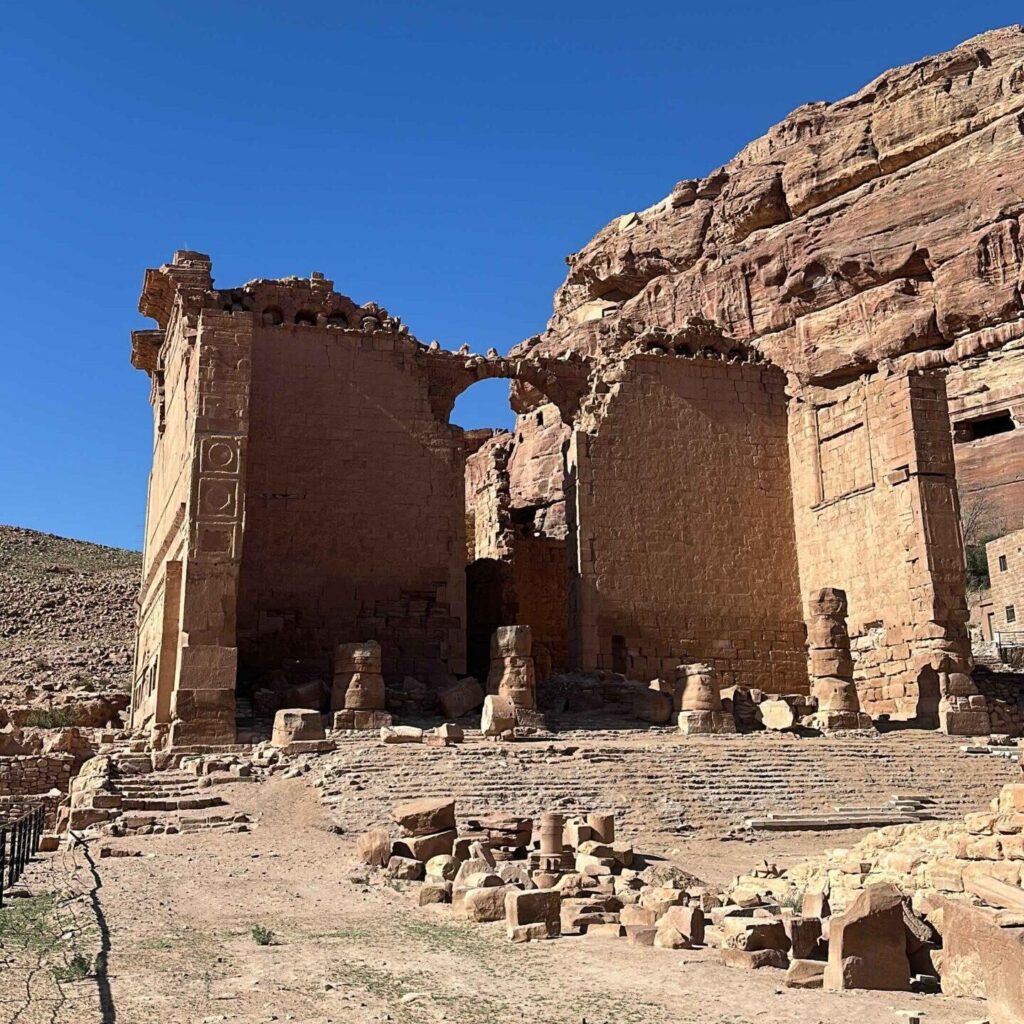
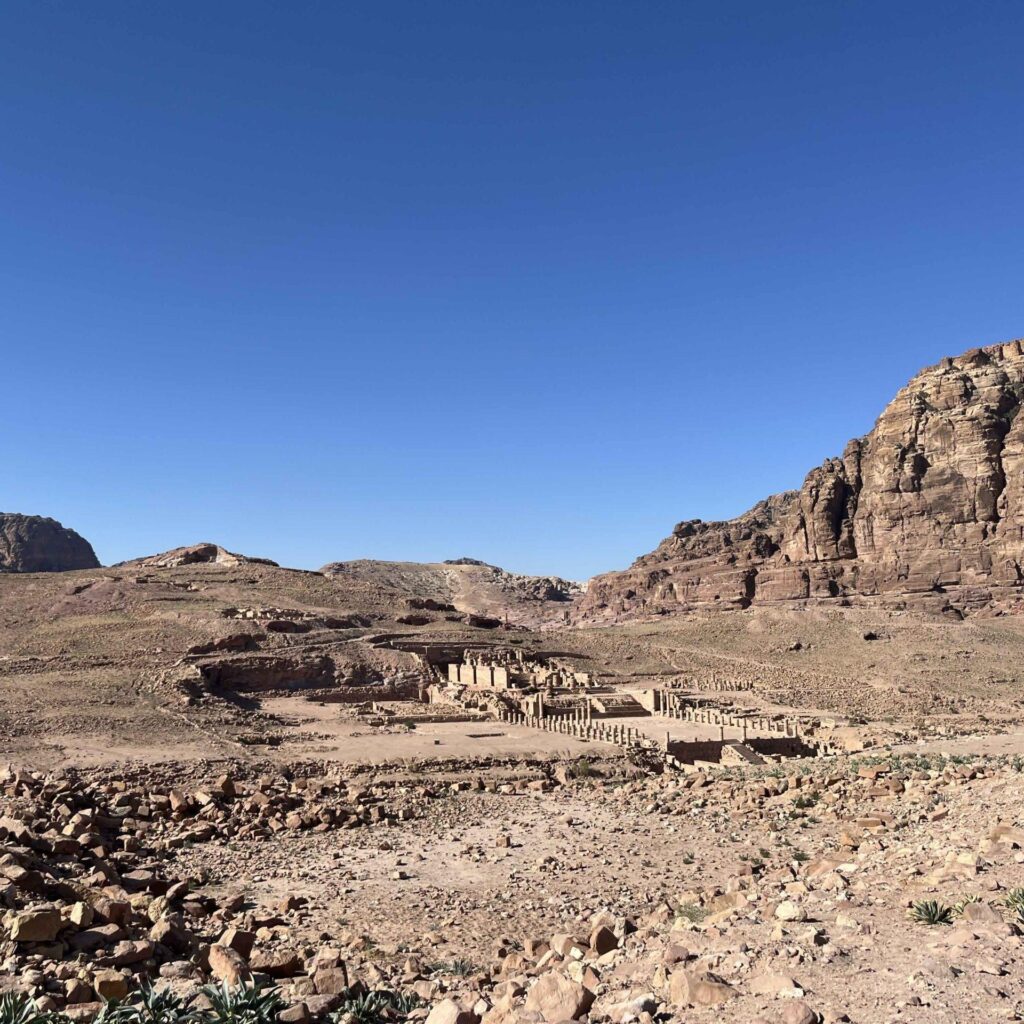
This route was more challenging, perhaps because we were tired from the other day. All along the way you are accompanied by dramatic views and panoramic points that invite you to take pictures. After arriving at the Monastery, we rested a little and started the descent. Next path we did was the Wadi Farasah trail to the High Place of Sacrifice.
At the beginning of the trail, we saw the “Necropolis”, including the the Renaissance Tomb and the Roman Soldier Tomb. Then we climbed some more steps. They were very steep and narrow, unlike those that led to the Monastery. Although the sun was scorching at that time of day, the rocks offered shade and places where you could rest to catch your breath. At the top of the stairs appeared two stone obelisks and the High Place of Sacrifice, which offered a fabulous view. This place, being located on the top of the cliff, does not offer any shade.
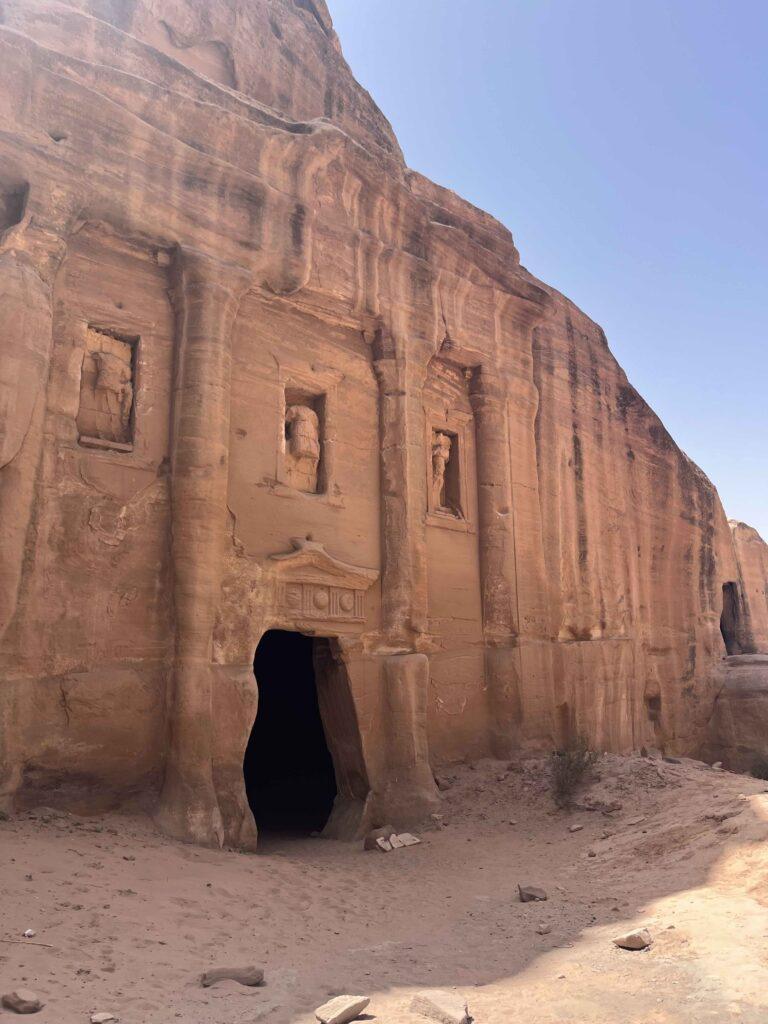
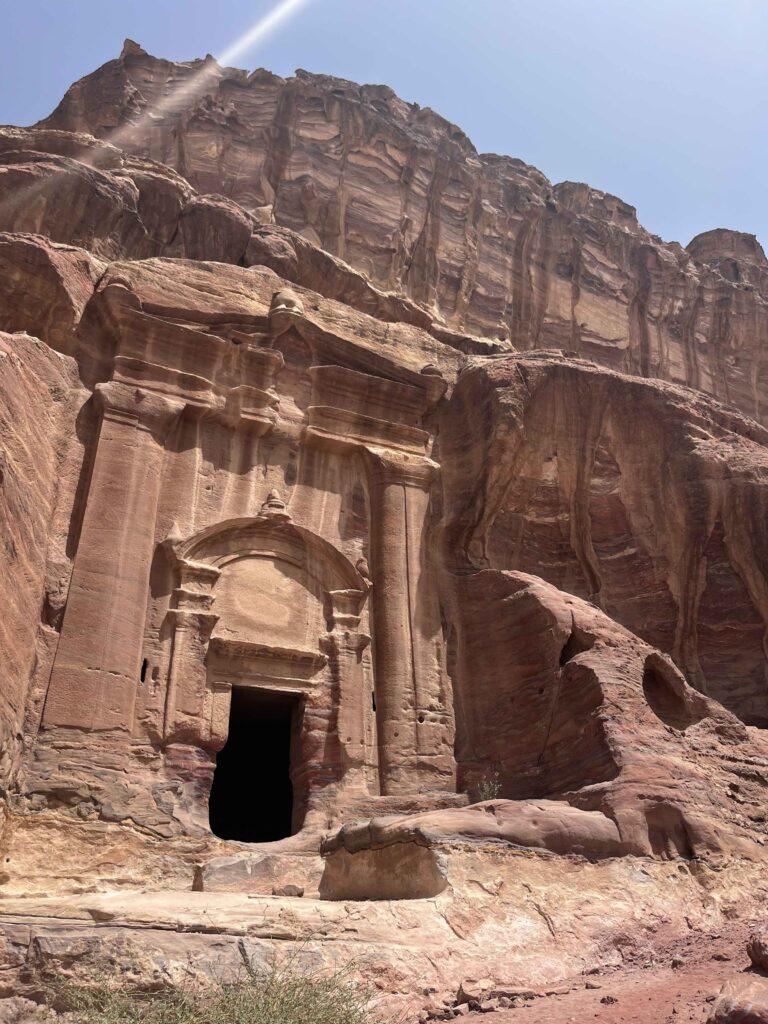
After enjoying the panorama for a few moments, we began the descent from the other side. The descent, again, offered the generous shade of the rocks until the point where the path joins the main one, very close to the Treasury. There we made the last stop to rest and start the hike back to the visitor center. That afternoon we had lunch and continued our journey towards the next adventure in Wadi Rum, where a fairytale evening awaited us.
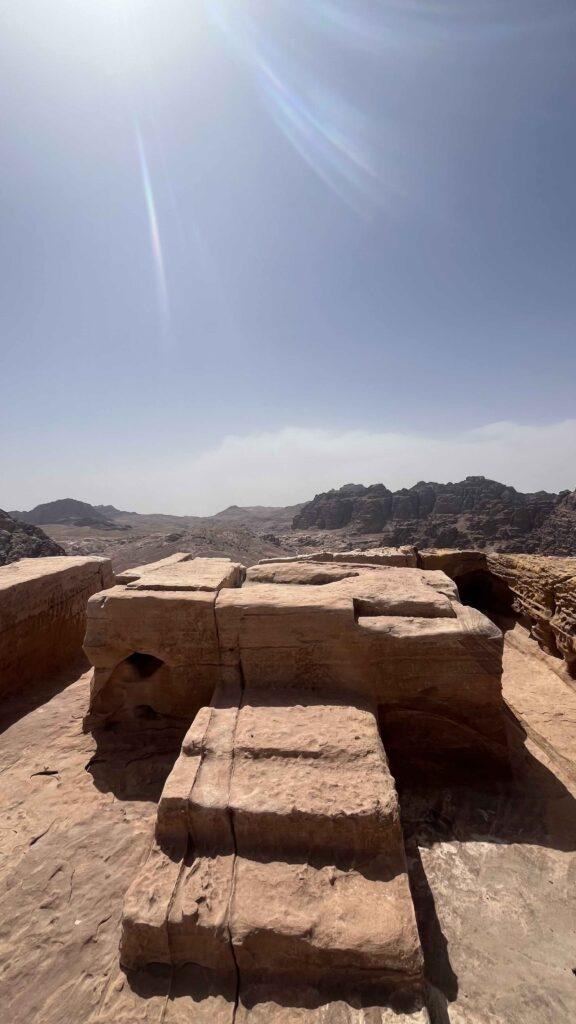
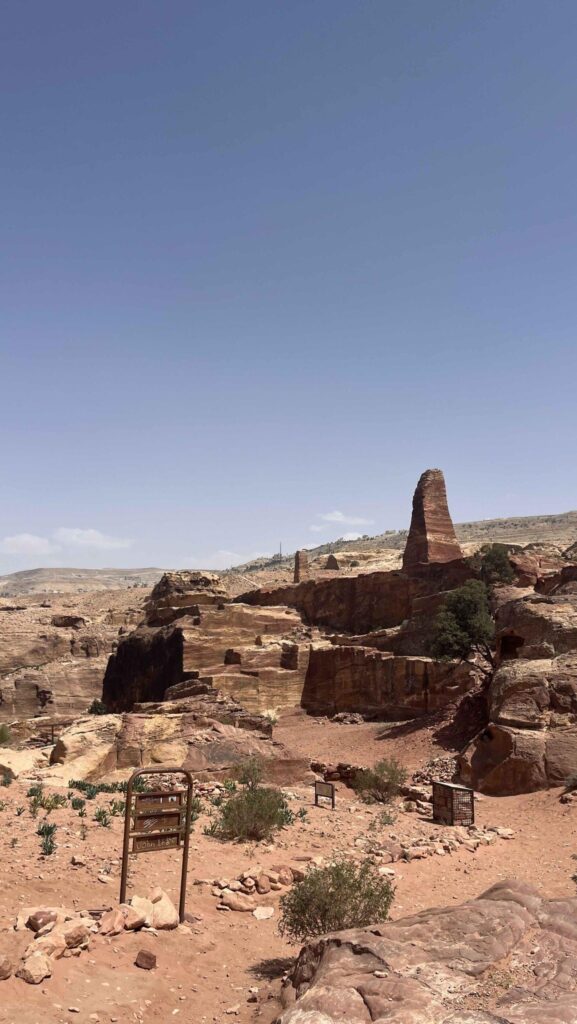
Petra is an experience that challenges you physically, but enriches you at every step. It’s not just a place you visit, but an entire city carved in rock, which still speaks of the grandeur of a vanished civilization despite centuries of dust that tried to cover it. It makes you reflect on the idea that nothing is eternal and every moment of flourishing is followed by moments of destruction.


